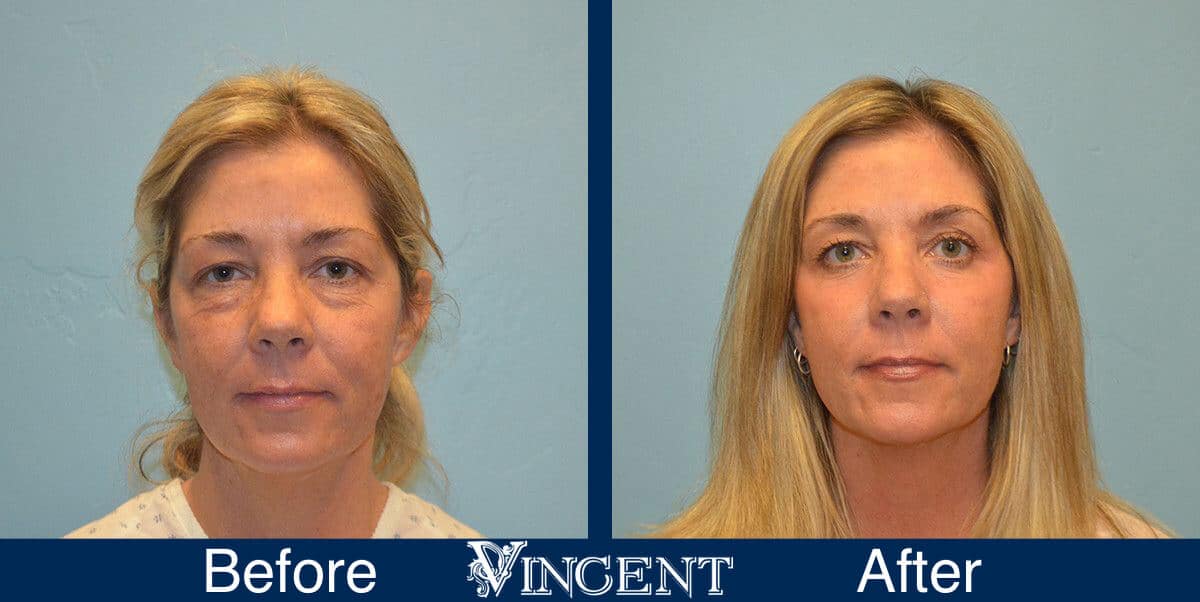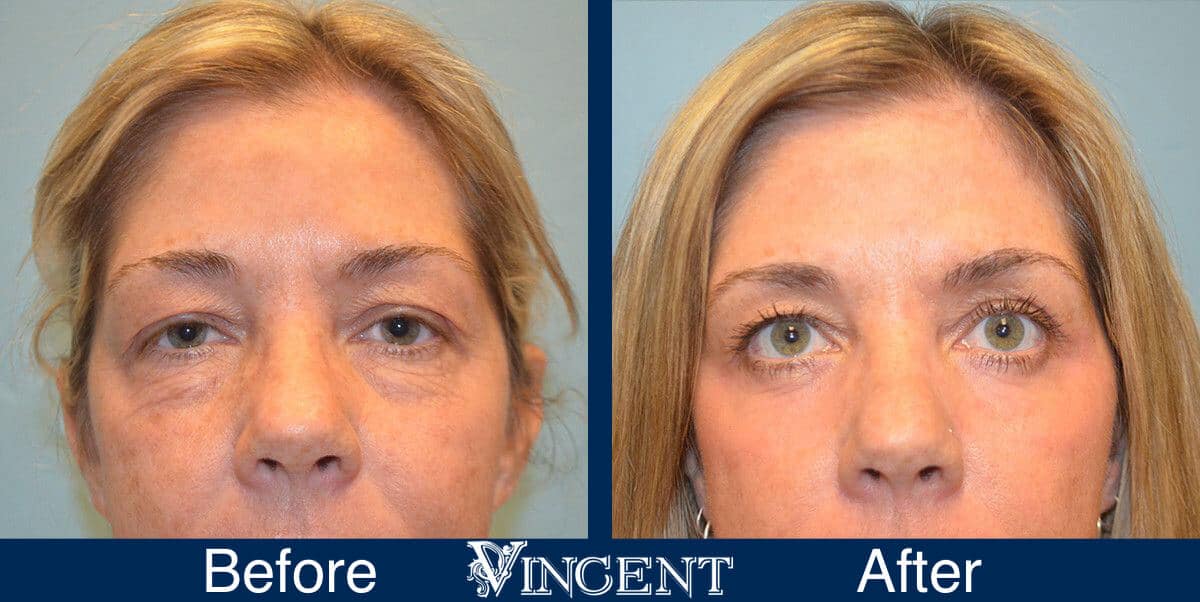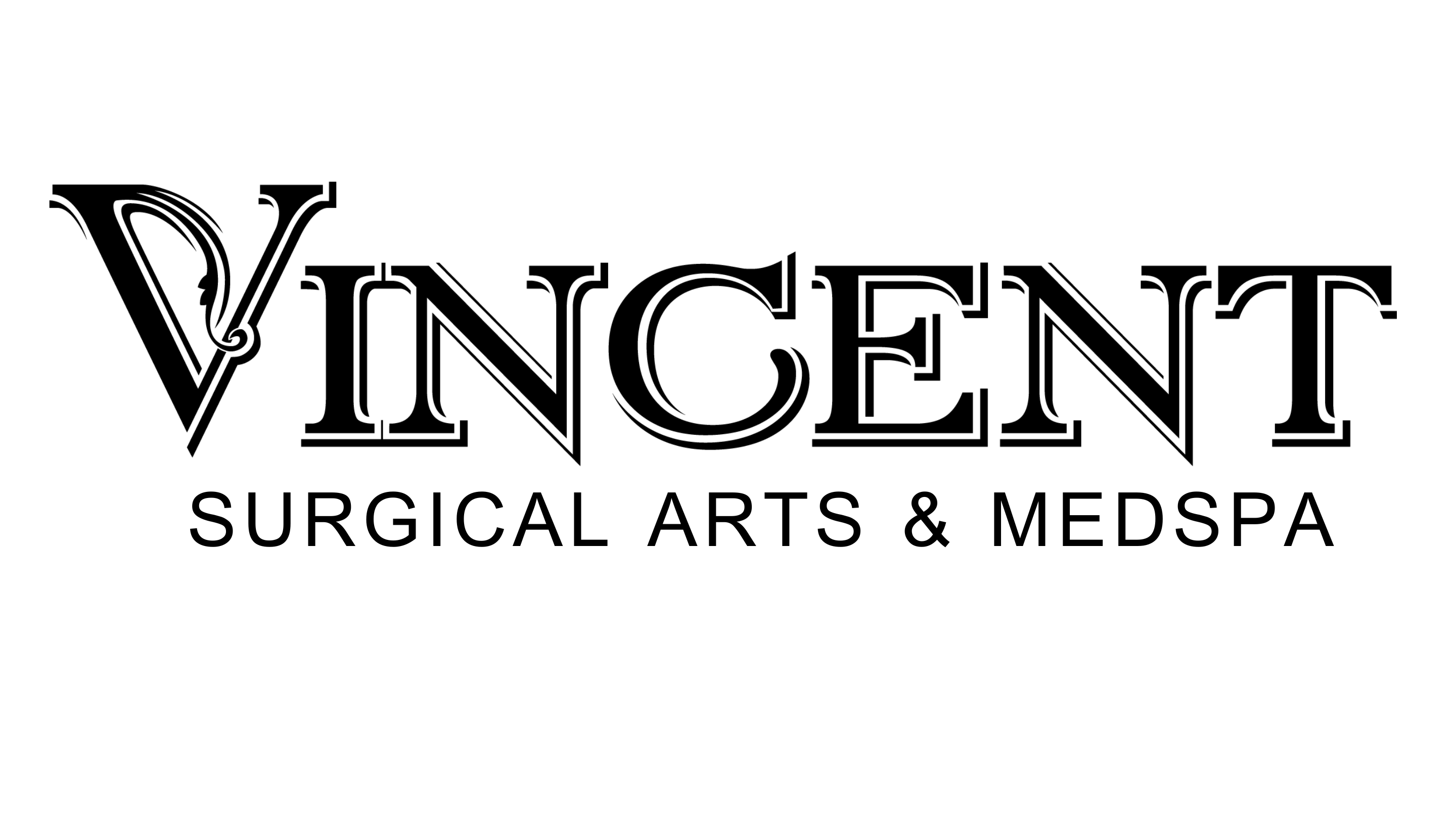CO2 Laser Resurfacing
Refresh your youth with a state-of-the-art skin treatment.
What does CO2 Laser Resurfacing do?
Smooth, healthy, attractive skin. However you choose to say it, “good looking” skin is one of the most desirable features in our society and a foundation for the rest of your appearance. The youthful unblemished skin you had as a child is the ideal. Sun damage, aging, wrinkles, acne, or scars detract from the natural beauty of your skin. Extensive sun damage multiplies your risk for the possibility of skin cancer. Cosmetics and medications simply don’t do enough to reverse these problems. Fortunately, today’s cosmetic surgeon has the means to improve many of these signs of aging and scars. Millions of people have benefited from the latest techniques, such as laser resurfacing of the skin and a sanding technique called dermabrasion.
CO2 Laser Resurfacing Before & After Photos


Testimonials from Real Patients


K. Pinkston
Dr.Vincent is the most kind, meticulous and skilled cosmetic surgeon in Utah. He goes way beyond what any other doctor would do, sometimes with no fee, in order to create the most perfect version of his patients. His perfectionism shows in the quality of his work. #drakevincentrealisticallyamazing


Allison T.
After going to multiple consultations, I finally decided to go with Vincent Surgical Arts and couldn’t be more satisfied with my results. The staff go above and beyond to ensure that I am comfortable and taken care of. My results are better than expected. If you want quality results at a good price, schedule a consultation today, you’ll be glad you did!
Why Choose Vincent Surgical Arts?
Fast Recovery
Advanced techniques result in less down time
Lasting Results
Enjoy your new beauty for years to come
Financing Available
Our partners have flexible plans with as low as 0% APR
Small Incision
Only half the size of the standard facelift
Less Scarring
Thanks to talented surgeons with decades of experience
Frequently Asked Questions
Am I a Good Candidate?
Laser resurfacing or dermabrasion can enhance your appearance if your complexion is affected by sun damage, aging, wrinkles, acne scarring, or other types of scars. A yellowish or sallow gray color of the skin caused by ultraviolet damage can be restored to a more youthful-appearing fair complexion with a “rosy glow.” Wrinkles around the mouth, eyes, and cheeks are often removed or dramatically improved. Sun-induced brown “liver spots,” and discolorations caused by “picking” acne, can be virtually cleared with this procedure. Scars causing elevations and depressions (“hills and valleys”) in the skin (i.e., chicken pox scars) can be improved with resurfacing.
Moderate and more severe scars benefit most from combining scar revision techniques with resurfacing. Similarly, very lax skin – even with the tightening achievable with resurfacing – may benefit from combining a facelift with the procedure. Your surgeon or his highly trained consultant will discuss this further if it applies to you.
Most importantly, do you have realistic expectations? By discussing achievable goals with their cosmetic surgeon, most people develop realistic expectations about their final result, when they can return to work and social activities, etc.
What Are the Risks?
Resurfacing is a popular image and skin health enhancing procedure. It provides the opportunity to safely improve one’s appearance and skin health in ways that are simply not otherwise achievable.
As with any surgery, resurfacing involves some level of risk. Although complications with this type of surgery are rare, they can and do occur, including obvious darkening or lightening of the skin, scarring, or an infection.
Communication and teamwork between you and your surgeon is the best way to prevent or manage risk factors. Inform them if you or anyone in your family are prone to a medical or surgical problem.
In summary, to help ensure a satisfactory outcome, you should be an appropriate candidate and adhere to the surgeon’s instructions and advice.
How is CO2 Laser Resurfacing Done?
Both laser resurfacing and dermabrasion remove damaged upper layers of the skin. Lower layers of the skin are stimulated to produce new collagen and a fresh surface for your complexion. Wrinkles, scars, blemishes, and pre-skin cancers may be removed or greatly reduced.
You and your cosmetic surgeon will decide whether local numbing medicine, gentle sedation, or general anesthesia is the better choice for your needs. Dermabrasion frequently uses a freezing spray in addition to one of the above comfort methods.
After you and your skin are numb and comfortable, laser resurfacing uses a precise beam of laser light, most frequently known as carbon dioxide (CO2), to vaporize the various layers of skin. New types of lasers are constantly in development and will undoubtedly be added to Vincent Surgical Arts repertoire. Your cosmetic surgeon’s experience and recommendation is a better guide than the latest stories in the media.
Dermabrasion in experienced hands is likely to be equally effective as laser techniques for most areas of the face. Dermabrasion uses a high-speed rotating sanding wheel or brush to peel away the skin. Both resurfacing instruments stimulate new, healthier appearing skin to replace and smooth sun damaged, wrinkled, discolored, or scarred areas. A specialized skin care plan may be recommended to maximize improvement and protect your resurfaced skin.
Your Consultation
During your consultation, you and your surgeon or his personal and thoroughly trained Surgery Consultant will discuss your desired areas of improvement. A thorough examination and a review of your medical and health history may be conducted. Also possible is a discussion of what other procedures may need to be performed to achieve your desired result, such as a chemical peel or facelift.
Your physician will discuss your commitment to skin care. They may pre-treat the skin or change your skin care regimen. They will discuss medications to avoid and may ask you to stop smoking one to two weeks before and after surgery. Most procedures are performed in an out-patient setting, unless you’re having other procedures done at the same time.
Although you may go home after your laser resurfacing or dermabrasion, have someone drive you home. It is wise to arrange for a friend, family member, or nursing assistant to help out around the house for a few days.
After Treatment – The Healing Process
After your resurfacing, ointments or bandage dressings will be applied to keep your skin moist, until the new upper skin layer reforms in five to seven days. It is important to keep the areas clean. Follow your post-op instructions carefully. Initially, redness may be very pronounced (it may last several weeks or months) but can be often camouflaged with post-operative cosmetics. It is important to follow whatever instructions you’ve been provided and call the office if you have any difficulties or questions, especially unexpected pain. Tenderness or a mild sunburn sensation is expected. You may be instructed to keep your head elevated. Some patients are instructed to apply cooling packs to the outside of dressings. Be sure to take any medications advised by your surgeon.
New Skin, New You
Remember, healing after a surgical procedure is a gradual process. Very quickly you will notice a significant improvement in your skin quality and appearance. Subtle signs of continuing improvement will usually occur for 6 to 12 months. You will continue to enjoy your younger-looking, smoother, healthier skin for many years to come.
Contact Us Today

6710 Blackstone Rd #201, Cottonwood Heights, UT 84121
